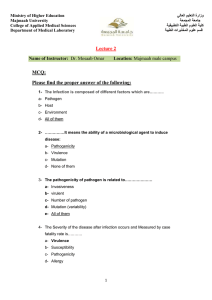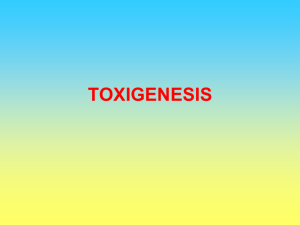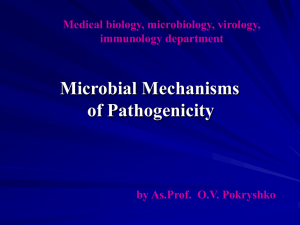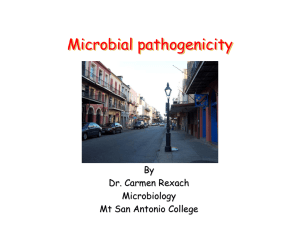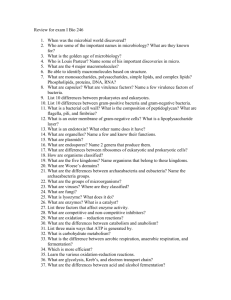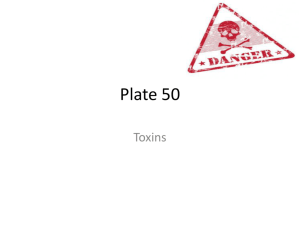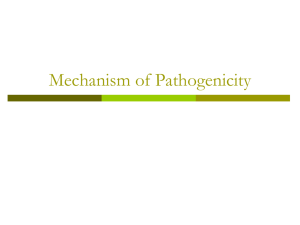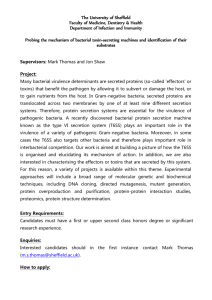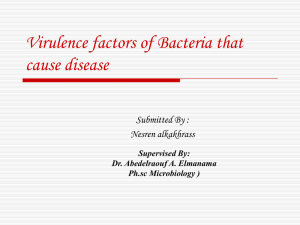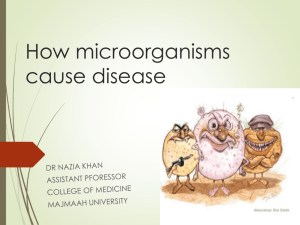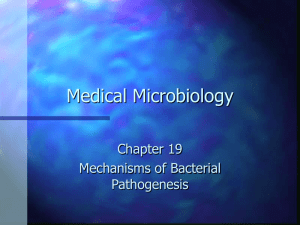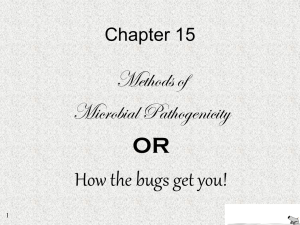Slide 1
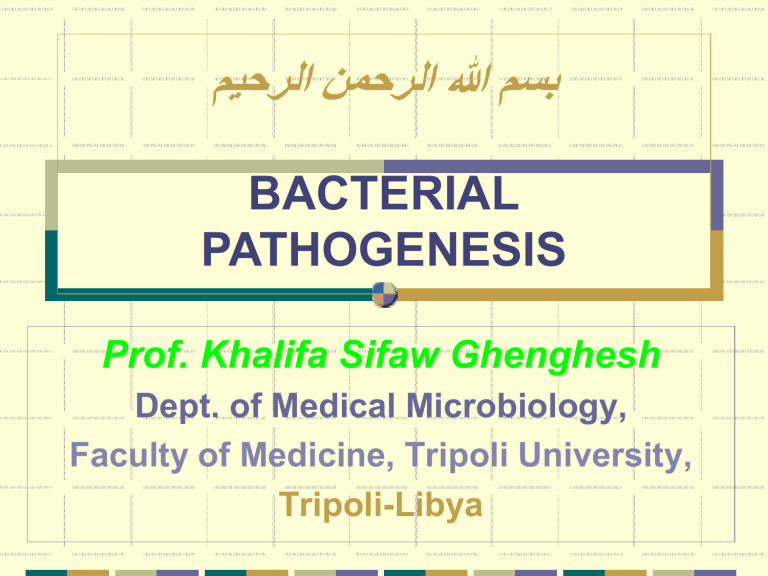
ميحرلا نمحرلا الله مسب
BACTERIAL
PATHOGENESIS
Prof. Khalifa Sifaw Ghenghesh
Dept. of Medical Microbiology,
Faculty of Medicine, Tripoli University,
Tripoli-Libya
The Pathogen:
•
A Disease Producing Microorganism.
Pathogenicity:
•
Capacity to Initiate Disease.
Virulence:
•
Capacity to Harm the Host.
•
Refer to Degree of Pathogenicity.
Opportunistic Pathogens:
•
Common or Non Pathogenic Microbes. e.g.
Normal Flora of the Body.
Infection:
•
The Lodgement and Multiplication of a
Parasite in or on the Tissues of a Host.
Disease:
•
A Rare Consequence of Infection.
Measurement of Virulence:
•
The Median Lethal Dose (LD50) is Used.
•
Number of Microorganisms or Micrograms of
Toxin Required to Kill 50% of Infected Animals.
Koch's Postulates
Isolated
• diseased not healthy people
Growth
• pure culture
Induce disease
• susceptible animals
Re-isolated
• susceptible animals
PATHOGENICITY
Virulence factors (Determinants of pathogenicity)
Number of initial organisms
Immune status
VIRULENCE FACTORS
Virulence factors help bacteria to:
•
Invade the host,
•
Cause disease, and
•
Evade host defenses.
1. Toxigenicity
Tissue injury:
•
Exotoxins:
•
Include several types of protein toxins and enzymes produced and/or secreted from pathogenic bacteria.
•
Include cytotoxins, neurotoxins, and enterotoxins.
•
Endotoxins:
•
Lipopolysaccharide
•
Gram-negative bacteria
•
Endotoxic (Septic) Shock:
•
Hypotension (tissue pooling of fluids)
•
Disseminated intravascular coagulation
•
Fever
•
Lack of effective oxygenation
•
Overall system failure
Differentiation of Exotoxins and Endotoxins.
Exotoxins Endotoxins
---------------------------------------------------------------------------------------
-Excreted by living cells.
Released after death of bacteria .
-Relatively unstable.
Relatively stable.
-Highly antigenic; Do not stimulate formation stimulate the formation of antitoxin.
of high-titer antitoxin.
-Converted into antigenic, Not converted into toxoids.
nontoxic toxoids.
-Highly toxic.
-Do not produce fever in host.
Weakly toxic.
Often produce fever in host.
2. Invasiveness
Capacity of a pathogen to spread in the host tissues after establishing infection.
Surface components that allow the bacterium to invade host cells can be encoded on plasmids , but more often are on the chromosome.
Epithelium
Penetration and spread
Salmonella typhi
Salmonella enteritidis
Vibrio cholerae
3. Capsules
Antiphagocytic structures
Polysacchride
4. Adhesion
The Relatively Stable, Irreversible
Attachment of Bacteria to a Surface.
•
Fimbrial Adhesins
•
Nonfimbrial Proteinaceous Adhesins.
adhesin
BACTERIUM
EPITHELIUM receptor
E. coli with fimbriae (Pili)
5. Siderophores
Iron-binding factors that allow some bacteria to compete with the host for iron, which is bound to hemoglobin, transferrin, and lactoferrin.
6. Other Aggressions
Mainly Enzymes:
•
Hyaluronidase >> Spreading Factor.
•
Coagualse >> Thrombin - Like Enzyme.
•
Fibrinolysin >> Streptokinase.
•
Proteases >> Hydrolyse Immunoglobulins.
•
Others
